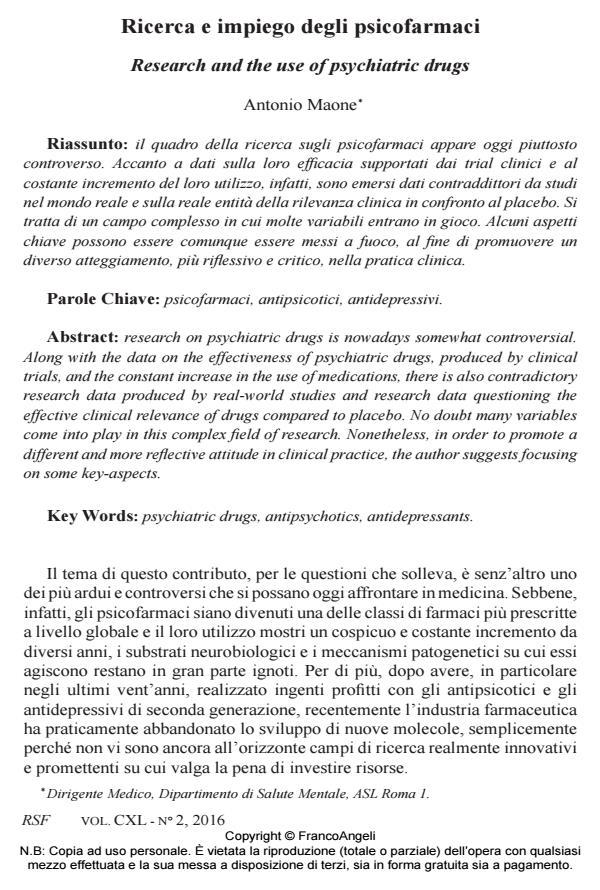Ricerca e impiego degli psicofarmaci
Titolo Rivista RIVISTA SPERIMENTALE DI FRENIATRIA
Autori/Curatori Antonio Maone
Anno di pubblicazione 2016 Fascicolo 2016/2
Lingua Italiano Numero pagine 20 P. 23-42 Dimensione file 189 KB
DOI 10.3280/RSF2016-002003
Il DOI è il codice a barre della proprietà intellettuale: per saperne di più
clicca qui
Qui sotto puoi vedere in anteprima la prima pagina di questo articolo.
Se questo articolo ti interessa, lo puoi acquistare (e scaricare in formato pdf) seguendo le facili indicazioni per acquistare il download credit. Acquista Download Credits per scaricare questo Articolo in formato PDF

FrancoAngeli è membro della Publishers International Linking Association, Inc (PILA)associazione indipendente e non profit per facilitare (attraverso i servizi tecnologici implementati da CrossRef.org) l’accesso degli studiosi ai contenuti digitali nelle pubblicazioni professionali e scientifiche
Il quadro della ricerca sugli psicofarmaci appare oggi piuttosto controverso. Accanto a dati sulla loro efficacia supportati dai trial clinici e al costante incremento del loro utilizzo, infatti, sono emersi dati contraddittori da studi nel mondo reale e sulla reale entità della rilevanza clinica in confronto al placebo. Si tratta di un campo complesso in cui molte variabili entrano in gioco. Alcuni aspetti chiave possono essere comunque essere messi a fuoco, al fine di promuovere un diverso atteggiamento, più riflessivo e critico, nella pratica clinica.
Parole chiave:Psicofarmaci, antipsicotici, antidepressivi.
Antonio Maone, Ricerca e impiego degli psicofarmaci in "RIVISTA SPERIMENTALE DI FRENIATRIA" 2/2016, pp 23-42, DOI: 10.3280/RSF2016-002003